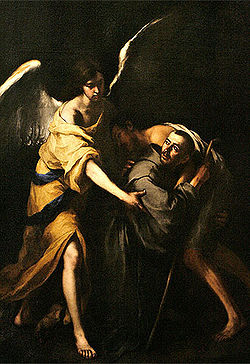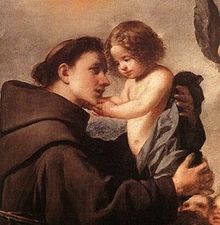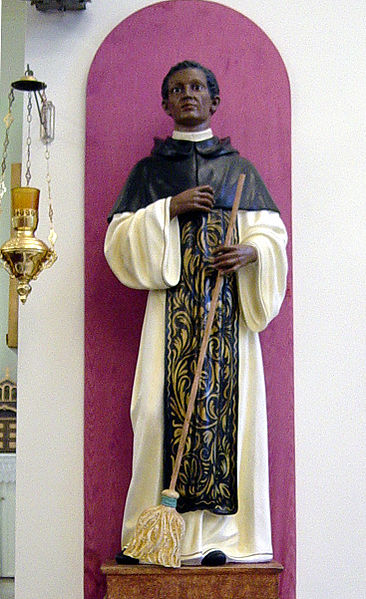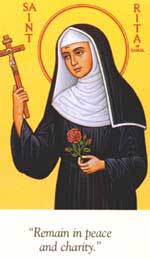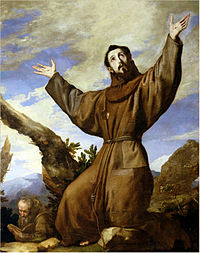![]()
![]()
![]()
![]()
DONATE ONLINE
CAF:Donate Now
PAYPAL:
![]()
Do you shop online? Raise money for Pro Labore Dei everytime you buy just by shopping through our easyfundraising page- CLICKHERE
![]()
Every time you search the web using CLICK HERE instead of Google or any other search engine, half a penny is raised for Pro Labore Dei. Search just 15 times a day and you can raise around £25 a year.
SAINTS
The meaning of the terms for "saint" in Hebrew, Greek, and Latin is "holy one." Thus the most basic meaning of "saint" is someone who is in some way holy, sanctified, or consecrated. All Christians aspire to become saints, that is, persons in heaven (officially canonized or not), who lived lives of great charity and heroic virtues.
Saints are not freaks or exceptions, they are the standard operating model for human beings. “Life holds only one tragedy, ultimately: not to have been a saint,” declares Charles Peguy.
In this short article, Peter Kreeft outlines those qualities which all saints have in common and in so doing helps all of us understand what it would mean to bear the image of God as perfectly as we are meant to. Saints are not the opposite of sinners. There are no opposites of sinners in this world. There are only saved sinners and unsaved sinners. Thus holy does not mean “sinless” but “set-apart:” called out of the world to the destiny of eternal ecstasy with God.
What is a saint? First of all, one who knows he is a sinner.
A saint knows all the news, both the bad news of sin and the good news of salvation. A saint is a true scientist, a true philosopher:
A saint knows the truth. A saint is a seer, one who sees what’s there. A saint is a realist. A saint is also an idealist. A saint embraces heroic suffering out of heroic love. A saint also embraces heroic joy. (This is one of the criteria for canonization: Saints must have joy.)
A saint is a servant of Christ. A saint is also a conqueror greater than Alexander, who only conquered the world. A saint conquers himself. What does it profit a man if he conquers the whole world but does not conquer himself?
A saint is so open that he can say, with Paul, “I have learned, in whatever situation I find myself, to be self-sufficient. I know how to live in humble circumstances; I know also how to live with abundance” (Phil. 4:11-12). A saint marries God “for better or for worse, for richer or for poorer, in sickness and in health, till death.” A saint is also so determined, so stubborn, that he will die before compromising the truth, and will write credo in the sand with his own blood as he dies. (One saint actually did this.)
A saint is a sworn enemy of the world, the flesh and the devil. He is locked in mortal combat with principalities and powers. A saint is also a friend and lover of the world. He kisses this sin-cancered world with the tender lips of the God of John 3:16. A saint declares God’s war on this world, sinking the cross into the enemy occupied earth like a sword, the hilt held by heaven. At the same time he stretches his arms out on that very cross as if to say, “See? This is how wide my love is for you!”
A saint is Christ’s bride, totally attached, faithful, dependent. A saint is also totally independent, detached from idols and from other husbands. A saint works among these others money, power, pleasure — as a married woman works with other men, but will not marry them or even flirt with them.
A saint is higher than anyone else in the world. A saint is the real mountain climber. A saint is also lower than anyone else in the world. As with water, he flows to the lowest places — like Calcutta.
A saint’s heart is broken by every little sorrow and sin. A saint’s heart is also so strong that not even death can break it. It is indestructible because it’s so breakable.
A saint takes his hands off the steering wheel of his life and lets God steer. That’s scary, for God is invisible.
A saint also has hands that move the world. He has feet that move through the world with a sure step.
A saint does not let others play God to him. A saint takes his orders from the General, not from the army. A saint also does not play God to others.
A saint is a little Christ. Not only do we see Christ through His saints, as we see a light through a stained glass window, but we also understand the saints only through Christ, as we understand eggs only through chickens.
The saints are our family. We are one Body. They are our legs and we are theirs. That’s why their feast is our feast. As Pascal says, “Examples of noble deaths of Spartans and others hardly affect us... but the example of the deaths of martyrs affects us, for they are our members... we do not become rich through seeing a rich stranger, but through seeing a father or husband rich.”
We become saints not by thinking about it, and not (certainly) by writing about it, but simply by doing it. There comes a time when the “how?” question stops and we just do it. If the one we love were at our door knocking to come in, would we wonder how the door lock works, and how we could move our muscles to open it?
Francis of Assisi once told his monks that if they were in the midst of the Beatific Vision and a tramp knocked at their door asking for a cup of cold water, turning away from the heavenly vision to help the tramp would be the real heaven, and turning away from the tramp to keep the blissful vision would be turning from God’s face.
A saint is one who sees who the tramp is: Jesus.
Some Saints To Emulate
THE SAINT OF MIRACLES, A SAINT FOR OUR TIME HIS SIGNIFICANCE IN THIS DAY AND AGE
Saint Padre was born in Pietrelcina near Benevento on 25 May 1887. He entered as a cleric into the Capuchin order On 6th January 1903 and was ordained a priest on 10th Augusf 1910 in the Cathedral of Benevento.
St. Padre Pio of Pietrelcina died on 23rd September 1968. From 1918 until his death, he carried the marks of Christ's passion on his body. Thirty-four years after his death, he was proclaimed a Saint. The solemn procession took place at St. Peter's on 16th June, and with this title, the church
Padre Pio was a typical saint of the middle Ages, an extraordinarily Modern Saint, strongly clinging to the essence of the Christian Faith and the fundamental truth of the faith and a genuine teacher for modern civilization. This is why, infact, John Paul II on several occasions has named him "the saint for the Third Millennium."
According to some theologians, there are three fundamental characteristics of Padre Pio's saintliness; suffering, meant as the price for redemption, concrete faith in an afterlife, and the awareness of the presence of satan in the world. If these three elements are removed from Padre Pio's biography, then it is impossible to understand his life.
The physical suffering, borne with love, to be similar to Jesus, has been the most evident and constant factor in Padre Pio's life. His physical pain was represented by numerous and inexplicable diseases and, in particular, by stigmata. Padre Pio was the 'friar with the stigmata,' - mysterious wounds which appeared on his body on 20th September 1918 and remained there until his death, that is for fifty years exactly. They were deep, bloody and very painful wounds. Padre Pio's life was, for half a century, a continual and unceasing martyrdom.
Padre Pio used to say, "As a priest, my mission is propitiatory; appeasing God on behalf of humankind." A propitiator is someone who intercedes before God, and in the Christian culture is a term mostly used for Jesus and the Virgin Mary. Padre Pio chose to be as similar as he could to them, and God accepted these wish by granting him the wounds of Christ's passion imprinted on his body. And these wounds never became infected, instead they emitted the delicate perfume of flowers.
With the stigmata, which he bore most of his life and the other physical and moral torments, Padre Pio drew people's attention to the Body of Christ as a means of salvation. Christ died on the cross for all humanity, and all the theology of Redemption rests upon this truth; one of the most important of Christianity. It is a truth, which is so important, that when human beings have forgotten it over the course of history, or tried to distort it, God has always intervened with events, facts and miracles. The history of the Church is full of these divine interventions, drawing attention to the Body of Christ.
These days, the temptation to forget the reality of Christ's Body is great. Many modern theologians, especially those with a Hegelian mentality, have promoted incorrect and harmful theories and God has intervened with many signs. One of these, without a doubt the most evident, was Padre Pio, who for half a century carried Christ's stigmata on his body, signifying that suffering is not something which is sterile or absurd, but the means to redemption
Padre Pio is also the saint of miracles, cures, bi-location, visions, dreams, intuition, perfumes, premonitions, prophecies, and infinite whirl of amazing things. Certainly, Padre Pio's saintliness derives from the great suffering he bore for love, in his heroic obedience, in his poverty, in the humiliations he suffered without ever complaining, in his unceasing prayer. But it is impossible to ignore the miraculous aspect of Padre Pio's life, which was evident, since he was a babe-in-arms, and was clear throughout his existence. He once declared, "I am a mystery to myself.
Padre Pio didn't write books, he didn't preach, he didn't teach theology, he didn't go on missions, he didn't pursue an ecclesiastical career nor did he hold conferences or write in newspapers. "I am a poor Franciscan friar who prays" he used to say. And through prayer he was an intermediary between heaven and earth: he obtained graces and conversions from God.
People flocked to him because he was famous as a miracle-worker. Padre Pio is thus the saint of miracles. God, through Padre Pio's miracles, enters into dialogue with humankind, offering precious and consoling evidence of an afterlife, and bearing witness to its existence. As the personal participation in the resurrection of Christ, heaven is the result of acceptance of God's grace in one's life; hell by contrast, is the utter loss of God through a definitive repudiation of that same grace. The sentence in the creed says; "I believe in the resurrection of the body and life ever lasting."
But, usually, when people speak of the afterlife, they usually think of something intangible, mysterious and spiritual which is indefinable and almost inexistent.
In Padre Pio's life, however the afterlife is a concrete reality, with which he had real daily contact; visions and conversations with the spirits of the deceased, angels, Jesus, the Virgin Mary and the saints. It was as if the curtain separating our world from the afterlife occasionally parted for him. Whoever was near Padre Pio, experienced that the invisible was visible for him,. With his existence full of miraculous facts, he was the apostle of the afterlife, the advocate of the concrete existence of that dimension, which is eternal life for everyone.
Padre Pio also believed in the terrible reality of the Devil. Satan isn't the imaginary figure with horns, a tail and bat wings exhaling sulphurous smoke, as he is often described. The devil is an extremely intelligent spirit. His primitive name was Lucifer, the angel of light who rebelled against God, choosing evil. He wanted to destroy God, but failing to do so, he tried to ruin the children of God, the creatures that God loves to the point of having sacrificed his only son for their salvation.
Padre Pio's entire life has been a body-to-body fight against satan. - At times, a cruel battle out of which he escaped with his bones literally broken. Many people smile when they hear of such accounts. However, we must remember that Padre Pio is now a saint and the church exalts him as an extraordinary example for all Christians. Thus, even these awkward aspects of his existence have to be taken into fair consideration. Removing them from his story implies falsifying his life and his message.
Thanks to the miracles that people continue to receive through his intercession, he continues to be a witness and an advocate of this reality.
St. Padre Pio, Pray for us. By: Mari Emmanuel Okoye (Pro Labore Dei Odiiches)
Patron Of Hospitals And the Sick
H e was a Portuguese by birth and of poor parentage. Though poor, they were very devout and charitable, providing little John with an ideal Christian background. Born in 1495, he grew up a pure and innocent boy shepherd until 1522 when he joined the army - He fought in wars against the French and later, in the war in Hungary against the Turks. He joined bad company, lost his fear of offending God, and gave up his devotional practices.
After the war, upon his demobilization, he went to work for a woman as a shepherd until, when he was 40 years old, a sermon of St. John of Avila he heard brought him to repentance and a radical change of life, devoting the rest of his life to serving the poor. He resolved to atone for his sins, sold all he had and gave the money to the poor. His great compassion for the distressed and downtrodden led him to leave his job and sail in a bid to help the Christian slaves in Africa and, perhaps, suffer martyrdom.
He met a Portuguese gentleman and his family in Gibraltar, going to Ceuta in Barbary on exile and, out of pity for them decided to follow them and help them. When the gentleman fell ill in Ceuta, he worked as a labourer to earn money to provide for them. However, on realizing that his desire for martyrdom might remain only a dream in Africa, he returned to Spain. Back in Gibraltar, he began to sell devotional books and articles with the aim of converting his customers and succeeded so well that he was able to open a shop in Granada for this purpose in 1538. This was only a stepping-stone to a deeper commitment to help the destitutes. He soon rented a house, which he used as a hospital for the sick poor who could not afford to go to the hospital. He served them so devotedly and skillfully, to the amazement of the city residents, that soon he had a band of helpers who formed the core of a Religious order later known as "Brothers Hospitallers of St. John of God", devoting themselves to the infirm in soul and body.
He spent the days tending the patients in his hospital and the nights fishing for new patients. He also had to go around daily seeking financial and material support for his project.
It became so famous, however, that people began to voluntarily bring their donations without waiting for him to come and appeal to them. They brought all that he needed and he was soon able to expand his little hospital. It became even more popular because John was always very generous giving money and himself in aid of the distressed. When there was a fire in his hospital, he personally carried out most of the sick, going in and out of the burning building several times, unharmed.
One night John rescued a dying, poor man on the streets, carried him to his hospital, settled him and was bathing him when he discovered that his feet had wound marks similar to those of Jesus. He looked up in amazement only to see that it was Jesus Himself! He told him "John, everything you do for the poor in my name, you do for me" and disappeared. Speechless, dazed with joy, John knelt down by that bed for a whole hour of thanksgiving to God!
John reached out to aid all destitutes and distressed persons he heard of or knew about, wherever they might be. He enquired, sending people to fish for the poor throughout the province and hurried to their aid in their homes or in whatever their area of need may be whether it is jobs or protection of defenceless young girls, food, shelter or conversion of hardened sinners. He worked tirelessly and was also a man of much prayer. His humility was remarkable. On one occasion when he was summoned before his archbishop on charges of harbouring tramps and women of bad character, he went on his knees sincerely declaring "I confess that I know of no bad person in my hospital except myself alone, who am indeed unworthy to eat the bread of the poor". The archbishop, full of respect for him, sent him away. The bishop of Tuy gave him the name "John of God".
He fell ill and died on his knees before the altar on March 8, 1550 at 55 years of age. He was buried by the archbishop followed by the whole of Granada in mourning. After many miracles in his honour, he was canonized by Pope Alexander VIII in 1690 and declared to be the heavenly patron of hospitals and the sick, along with St. Camillus de Lellis by Pope Leo XII in 1986. Printers also honor him and booksellers because of his activity in book trade in his early 40s.
Mrs. Fola Olumide Member
ST. ANTHONY OF PADUADo you know that he was baptized Ferdinand but changed to Anthony when he entered the Augustinian order?
St. Anthony was born in Lisbon, Portugal, of noble and virtuous parentage in the year 1 195. He and his brothers and sisters had a happy childhood. He also had a religious upbringing, exposed at an early age to living and education at the Cathedral of Lisbon from where he entered the Augustinian Order in 1210. There, he devoted himself to a life of prayer and study, becoming an outstanding biblical scholar.
Eleven years later, moved by missionary zeal and a longing to die for Christ, he joined the Franciscans and was posted to Morocco where the Moors had earlier killed some Franciscans. Apparently, that was not his destiny for ill health forced his return to Europe and a fresh posting to San Paolo, near Forli. There, the humble, self-effacing, prayerful Anthony devoted himself to performing the menial tasks in the service of his fellow friars. Little did they suspect his prodigious intellectual and spiritual endowments until an unexpected occasion arose when he was ordered to preach a sermon to a gathering of many priests. To the astonishment of all, Anthony's eloquence, persuasive powers, deep knowledge of Scripture and burning love of God magnetized them all and inflamed them also love of God.
That was the beginning of his teachings career. He was assigned to teach Theology to monks from city to city and to preach to the people, especially heretics. He brought all his qualities to bear in the execution of this task so much so that wherever he went, crowds followed him -men and women alike stopped in their tracks to listen. The crowds were so large that Churches could not contain them and he had to preach in open air.
His magnetic personality and transparent holiness brought large numbers of hardened criminals and heretics to conversion and confession. It also brought about a new social order with sworn enemies reconciling, imprisoned common debtors regaining their freedom and governments legislating just and beneficial laws to correct abuses. He was also reputed to have miraculous powers.
The Baby Jesus was said to have visited him one night in Padua and flooded his room with such brilliant light that betrayed the fact and led to the discovery. This smallish and plump Doctor of the Universal Church died on 13th June 1 231 in Padua at thirty-six years of age. The miracles obtained through his intercession have continued unabated since 'Wonder Worker" and Patron of “lost” cases.
Patricia Fola Olumide (Mrs)
Patron of Social Jusice
He was born in Lima, Peru in 1579 of a Spanish knight and a Negro woman, a freed slave from Panama. Though their father acknowledged both he and his sister as his children, he left them to the care and support of their mother for many years. They were despised by their neighbours and lived in great poverty. Despite that handicap, Martin had a great love for the poor and the suffering and was known to have given all he had to help them. On one occasion, he even gave the money for the family dinner to a beggar though his mother, when she sent him to go and buy some food with it, had warned him not to give out the money because that was all they had. He gave it to the beggar because he was overwhelmed by sympathy for him and asked Jesus to take contol and not allow his mother to be with him.
After some years, his father took Martin and his sister to Ecuador to be educated in their uncle's care. Martin was a bright student and, on completion of his studies, was sent back to Lima to learn the "Barber - Surgeon" trade. He was delighted at this opportunity and used his medical knowledge to help the poor. Every morning, after mass, he did a round, visiting the sick and the poor, treating and healing them free of charge. Sometimes, he spent the whole night with an ill patient, urging him to prayer.
At fifteen years of age, he joined the Dominican monastery as a Lay Helper, not as a Brother, because he wanted to remain unimportant, doing the little things well for God. He worked indefatigably and diligently as a barber, surgeon, wardrobe - keeper and infirmarian, with outstanding holiness. He continued to look after the sick in Lima and helped to establish orphanages and many charity organizations. He was said to have miraculously increased the daily rations of food, which he was in charge of distributing to the poor at the Dominican Monastery.
He went out of his way to care for and protect the unfortunate slaves, brought from Africa, with outstanding zeal. He longed to die for Christ in some foreign land but had to settle for a life of penance and asceticism at home instead, spending many nights in prayer, penance and spiritual reading. After nine years of outstanding service as a Lay Helper, he was persuaded to become a Lay Brother.
He was a friend of all creatures - man, birds and beasts alike - and they listened to him and obeyed him. His miraculous powers could not remain hidden, despite his efforts to conceal them out of humility and a deep sense of unworthiness. He had the gifts of healing, multiplication of food, prophecy, bi-location and could read people's hearts and understand their unexpressed desires even from afar. He is the first recorded "half-caste" victim of discrimination to live Christian virtues to a heroic degree. He died in 1 639. He is the Patron of Social Justice.
His feast day is 3rd of November. Patricia Fola Olumide (Mrs)
St. Rita was born on 22nd May, 1381 at Rocca Porena, a little town about 2 miles from Cascia in the land of Umbria, Italy. She was the only child of Antonio and Amata Mancini who had prayed ceaselessly for many years for a child. When Amata was past childbearing age, an angel appeared and assured them that they would have a child - And so it was for this exemplary couple known as' "Peacemakers of Christ" in their community where, crucifix in hand, they successfully reconciled enemies and theological disputes. Rita's birth in the spring of 1381 brought joy and excitement to their little town as all, gaily dressed, trooped out to witness her baptism as Margarita, four (4) days later.
Right from birth, it was obvious that she was not an ordinary child. As she lay in her cradle after her baptism, she was surrounded by a swarm of bees, of an unknown species in their country. They flew all around her and eyen went in and out of her mouth without harming her. She grew up to be a pious child and, from a very early age, she got her parents to give her a little prayer room where she spent all her spare time praying and meditating.
It is no wonder then that by the time she was twelve (12) years old, she had decided to consecrate her life to God in the Religious life. She was remarkably obedient, patient in suffering, very helpful to her parents in their work and extra-ordinarily prayerful.
Her parents, concerned perhaps about their work and her mother's health, tearfully prevailed on her to marry instead and soon married her to Fernando, a temperamental young man capable of trying the patience and virtue of even an angel. They were blessed with two sons who, unfortunately, were of the same unpleasant temperament as their father.
Her tireless prayers for her cruel husband’s conversion were heard and he became a changed, God-fearing family man. However, their peace and happiness was short-lived when he was murdered by an old enemy. His two sons vowed and began to plot to avenge their father's death, thus increasing Rita's problems. She spent hours praying for the soul of her husband, the conversion of his murderers and a change of heart for her children. She begged God to take them, if they would not change, rather than allow them to commit this mortal sin. God heard her prayer and took them, leaving St. Rita completely alone in the whole world, at the age of 35 years. These tragic events changed the course of her life forever.
After a little while, she applied to enter the Augustinian Monastery in Cascia but she was refused. Thrice she applied and thrice she was rejected. She re-doubled her prayers and, one night, Saints John the Baptist, Augustine "of Hippo and Nicholas of Tolentino took her into the locked convent. When the nuns saw her the next morning in their courtyard, in such mysterious circumstances, they recognized that God was at work and enrolled her. At least, she had found true happiness.
She lived the virtues of prayer, obedience, penance, unfailing charity and service to a heroic degree for forty (40) years and the other Augustinian nuns soon recognized the presence of a Saint among them. She was devoted to the Blessed Sacrament and longed to share in the passion of Our Lord Jesus Christ. One night, in the Chapel, as she begged for a share, the Lord gave her one thorn from His crown of thorns, which penetrated her forehead and was so deeply embedded that she could not remove it. It became gangrenous and was so foul-smelling that she had to be isolated from the other nuns for the remaining fifteen (15) years of her life.
When Pope Nicholas IV declared a Jubilee in Rome, she was granted permission to go, provided the wound was healed, to avoid embarrassment. She begged the Lord to heal it and He did, she joyfully went to Rome and as soon as she returned home, the wound (stigmata) re-appeared. In order to try her obedience, her Superior ordered her to water a withered vine and she obeyed without any hesitation. The Lord rewarded her by, reviving the vine, which still produces grapes till today. It is known as the "Vine of St. Rita", standing in the Monastery garden.
During her last illness, she requested a relative to bring her a rose from her old home in Rocca Porena.Though it was in the middle of winter, the Lord caused a rose to bloom and her relation brought it to her. For this reason, roses are offered on her feast days and at devotions to her.
When she died, her humble cell glowed with heavenly light, the wound on her forehead shone like a brilliant diamond and the church bells began to ring on their own accord. A miracle occurred at that very moment when a relative with a paralyzed arm touched her sacred remains and was instantly cured. A carpenter with stiffened fingers, who knew her and offered to make her coffin, was instantly cured.
Her uncorrupted corpse, with beautiful and radiant face, lies in a glass coffin in the Convent Chapel, now a basilica, at Cascia. The hall is pervaded with the fragrance of sweet-smelling roses. Many miracles occurred through her intercession during her lifetime and even more after her death at the ripe old age of 75 years. She is one of the strangest saints on record - born of miraculous conception, an exemplary wife, mother, widow and nun!!
This "mystical jewel of Umbria" was canonized on 24th May 1900. She is known as the Wonder Worker, Advocate of the Hopeless.
FOLA OLUMIDE (MRS)
St. Francis, born in 1181, was the favourite son of his rich merchant father, Peter Bernadone. He lived the gay life of the rich and, at 20 years of age, became a soldier. He was wounded, taken prisoner-of-war and imprisoned for several months. When released almost at the point of death, it took him almost a year to regain his health. He did quite a lot of soul-searching during that period but, as soon as he was well, he resumed the gay social life of Asisi.
After a while, he re-enlisted in the army and in Spoleto, a village in South Italy, he heard the voice of Jesus and, wearied by their long discussion, asked in despair "Lord, what will you have me do?" Jesus told him "Return home. Your vision will have its spiritual fulfillment through Me" That was the turning point in his life. He began to seek solitude, communing with his Creator in barren places. Finally, he embraced a life of total poverty in imitation of Christ, gave all his possessions to the poor and began to minister to the sick.
Thus, liberated by holy poverty, he became close to the poor, identifying with them to show them their dignity and value in God's eyes and teach them how to praise God. His conversion was complete when he embraced a leper in the advanced stage of the disease in obedience to Christ who asked him to kiss the leper. From then on, he sought other lepers, kissed’ them like long-lost friends and started a hospital for them.
He stole some cloth from his father's shop and sold it when he needed money to build the Church of St. Damian. His angry father handed him over to the law to get him imprisoned and he had to quickly refund the money and remaining unsold cloth to get out of it'. This caused a complete break in their relationship and the beginning of a totally new life for Francis.
He now lived a life of intense poverty, hunger, cold, struggle and tears, living in cold caves often with only a piece of rock for pillow. He begged for money to meet the needs of the sick and poor he was looking after and went about bare-foot.
He loved the Holy Eucharist and received it daily. He also loved the Church and revered the priesthood. He often wept because he found it difficult to persevere in imitating Christ and over negligent priests and the self-indulgent laity.
One day, as he sat before the crucifix in the Church, Jesus crucified spoke to him from the cross asking him to help repair his Church. From then on, whenever he saw a Church in disrepair, he struggled to help, sometimes, physically doing all the work himself - cutting rocks and timber and dragging them to the Church under repair. He was thus able to restore many Churches in Asisi.
Soon, he began to attract followers and formed the order of Mendicant brothers and Sisters. He encouraged his followers to give up all they had for the joy of simplicity. They were ridiculed by friends and relations. In the face of the harsh elements, some betrayed him, abandoning this tough life-style and returning to easier ways of life.
He preached to people, even birds and animals. By and by, he established the Franciscan Order dedicated to charity and the simple life. He assisted St. Clare to start the Women's unit of the Order, later known as the Poor Clares. He encouraged them to struggle along this uphill road of extreme suffering, purity, love, poverty, hunger, nakedness, cold and tears.
The stigmata came to him after he had lived this life of perfection and was dying of a fatal disease. He had imitated Christ so closely, more than any saint before him or since, and longed to die like Christ. He begged continuously for this favour and received it in August, 1224 when he and a few friars retired to Mount Alvernia in Umbria, near Asisi, for intensive prayers. In a vision, he saw Jesus embrace him and pour into his body and soul the passion and sufferings of Good Friday, leaving him with the permanent imprint of his five wounds. These were the red seals of approval on his feet, hands and side.
Many legends grew around him in the 14th Century with even Protestants and non-Christians honouring and admiring him. Stories abound of his love for the poor, the lowly animals and nature in all its beauty.
He died on October 4, 1226 at 45 years of age. FOLA OLUMIDE (MRS)
|

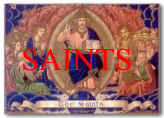
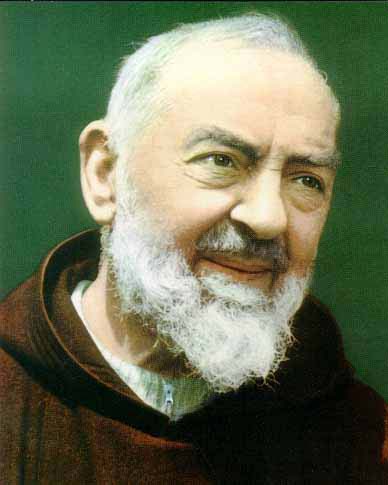 has revealed to all his followers that he is an example to be followed and a sure intercessor before God.
has revealed to all his followers that he is an example to be followed and a sure intercessor before God.